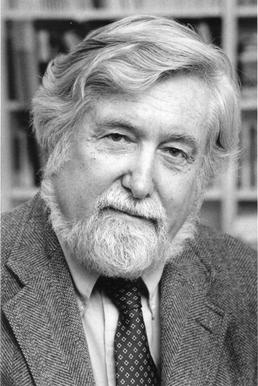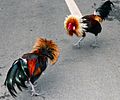Clifford Geertz facts for kids
Quick facts for kids
Clifford Geertz
|
|
|---|---|
 |
|
| Born | August 23, 1926 San Francisco, California, U.S.
|
| Died | October 30, 2006 (aged 80) Philadelphia, Pennsylvania, U.S.
|
| Alma mater | Antioch College (BA) Harvard University (PhD) |
| Known for | Thick description Epochalism |
| Spouse(s) |
Hildred Geertz
(m. 1948; div. 1981) |
| Scientific career | |
| Institutions | University of Chicago Institute for Advanced Study, Princeton, New Jersey |
| Thesis | Religion in Modjokuto: A Study of Ritual Belief In A Complex Society (1956) |
| Doctoral advisor | Talcott Parsons |
| Doctoral students | Lawrence Rosen, Sherry Ortner, Paul Rabinow |
| Influences | Talcott Parsons, Gilbert Ryle, Ludwig Wittgenstein, Max Weber, Paul Ricoeur, Alfred Schütz, Susanne Langer |
| Influenced | Stephen Greenblatt, Quentin Skinner |
Clifford James Geertz (born August 23, 1926 – died October 30, 2006) was an American anthropologist. An anthropologist is a scientist who studies human societies and cultures. Geertz was very important in a field called symbolic anthropology. For 30 years, he was seen as one of the most important cultural anthropologists in the United States. He was also a retired professor at the Institute for Advanced Study in Princeton, New Jersey.
Geertz received special honorary degrees from many top universities. These included Harvard University, the University of Chicago, and the University of Cambridge. He was married to Hildred Geertz, who was also an anthropologist. Later, he married Karen Blu, another anthropologist. Clifford Geertz passed away on October 30, 2006, after heart surgery.
Contents
Life and Early Career
Clifford Geertz was born in San Francisco on August 23, 1926. He served in the US Navy during World War II from 1943 to 1945. After the war, he went to Antioch College in Yellow Springs, Ohio. He earned a bachelor's degree in philosophy in 1950.
He then went to Harvard University and earned his PhD in anthropology in 1956. At Harvard, he studied social relations and worked with important scholars like Talcott Parsons.
Fieldwork and Studies
Geertz did his first long research trip in Java, Indonesia, with his wife, Hildred. He lived with a railroad worker's family for two and a half years. During this time, he studied the religious life of a small town.
After this, Geertz went back to Indonesia to study in Bali and Sumatra. His PhD paper was called Religion in Modjokuto: A Study of Ritual Belief In A Complex Society.
Throughout his life, Geertz received many special awards and honorary degrees. He was also a member of important academic groups like the American Academy of Arts and Sciences.
Teaching and Key Works
Before joining the University of Chicago in 1960, Geertz taught at several schools. At Chicago, he focused more on Indonesia, studying both Java and Bali. He wrote three books during this time: Religion of Java (1960), Agricultural Involution (1963), and Peddlers and Princes (1963).
In the mid-1960s, he started a new research project in Morocco. This led to more books, including Islam Observed (1968). This book compared what he learned in Indonesia and Morocco.
In 1970, Geertz moved to the Institute for Advanced Study in Princeton, New Jersey. He became a professor of social science there. In 1973, he published The Interpretation of Cultures. This book collected many of his essays from the 1960s. It became his most famous work and made him a leading thinker in anthropology.
He also edited a book called Myth, Symbol, Culture in 1974. This book included papers from many important anthropologists. Geertz continued to write about his fieldwork, including Kinship in Bali (1975).
Later Life and Ideas
From the 1980s until his death, Geertz wrote more about his ideas and theories. Many of his later books were collections of essays. These included Local Knowledge (1983) and Available Light (2000). He also wrote about how anthropologists write their studies in Works and Lives (1988).
Geertz did a lot of ethnographic research. This means he spent time living with and observing different cultures. He did this in Southeast Asia and North Africa. His research helped him write his famous analysis of the Balinese cockfight. This was a detailed study of a cultural event.
He also led a project called Committee for the Comparative Studies of New Nations. As part of this, he studied "bazaars, mosques, olive growing and oral poetry" in Morocco. This research helped him develop his idea of thick description.
Geertz greatly influenced how people think about culture and society. He helped anthropology focus on the meanings people create in their lives. He thought deeply about the main ideas of anthropology, like culture and ethnography.
He passed away on October 30, 2006. At the time, he was studying how different ethnic groups live together in the modern world.
Main Ideas and Contributions
At the University of Chicago, Geertz became a strong supporter of symbolic anthropology. This idea focuses on how symbols help create meaning in public life.
In his important book The Interpretation of Cultures (1973), Geertz explained culture. He said it is "a system of inherited conceptions expressed in symbolic forms." This means culture is like a set of ideas passed down through generations. People use these ideas, shown through symbols, to understand and share their knowledge and feelings about life.
One of his most famous ideas is thick description. This is a way of studying human behavior. It means not just describing what someone does, but also understanding the many layers of meaning behind it. For example, if someone winks, a thin description is just "they closed one eye." A thick description would explain if it was a secret signal, a joke, or a nervous habit, based on the culture and situation.
Legacy
Clifford Geertz's research and ideas had a huge impact on many fields. These include modern anthropology, communication studies, geography, and history. His work helped scholars understand cultures in new and deeper ways.
Honors
- Association for Asian Studies (AAS), 1987 Award for Distinguished Contributions to Asian Studies
Images for kids
See also
 In Spanish: Clifford Geertz para niños
In Spanish: Clifford Geertz para niños


